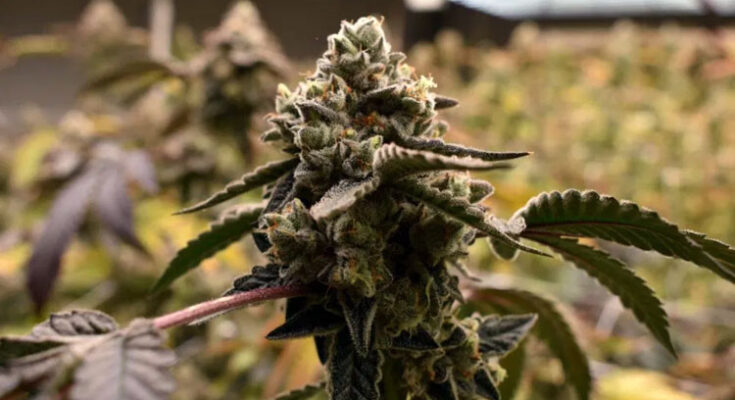Welcome to the fascinating world of indoor marijuana cultivation. With an increasing number of places legalizing marijuana for medicinal and recreational use, more people are discovering the joy and rewards of growing their own cannabis plants at home. This comprehensive guide will demystify the process, equipping you with the knowledge and confidence to successfully grow marijuana indoors.
Understanding marijuana and its varieties
Marijuana cultivation is as old as civilization itself. History suggests that cannabis was one of the first agricultural crops, cultivated for its medicinal and psychoactive properties. Today, there are countless strains available, each with its unique properties, flavors, and effects. Before diving into indoor cultivation, understanding these strains and their specific growing conditions is crucial. Familiarizing yourself with different strain characteristics, such as Sativa, Indica, or Hybrid varieties, and their respective growing needs can enhance your cultivation success. Whether you prefer a calming Indica, an energizing Sativa, or a balanced Hybrid, each strain offers a unique cultivation journey and end result.
Getting started: Preparations for indoor cultivation
Embarking on your indoor cultivation journey requires careful planning. Always remember to check your local laws regarding marijuana cultivation, as legislation varies widely. Once you’ve ensured legality, selecting and preparing an indoor space becomes the next priority. An ideal space should have ample ventilation, and control over light exposure, and should be temperature regulated. To set up this space, you will need growing lights, fans, pots, soil, nutrients, and a few other basic tools. While initial costs may seem steep, remember, you’re investing in a renewable source of marijuana that can provide significant savings in the long run.
A deeper dive into cannabis seeds
Quality seeds are the foundation of successful marijuana grow. There are three main types of seeds: regular, feminized, and auto-flowering. Regular seeds can develop into either male or female plants. Feminized seeds are genetically altered to produce only female plants, ensuring a resinous harvest. Auto-flowering seeds, on the other hand, are a game changer for indoor growers. They are not reliant on light cycles to transition from the vegetative to the flowering stage, which significantly simplifies the growing process. With auto-flowering seeds, you can achieve a faster harvest and multiple grows in a year, which can increase your yield substantially. The choice of seed type depends on your growing goals and the amount of effort you’re willing to put into plant care.
Cultivation step-by-step: From seed to harvest
With your seeds and setup ready, it’s time to embark on the cultivation journey. First, germinate your seeds by soaking them in water until a tiny root appears. This critical stage, often referred to as “popping” the seeds, typically takes between 24-72 hours and sets the foundation for a healthy plant.
Once your seeds have germinated, it’s time to transplant them into small pots filled with a good-quality soil mix. Remember to handle your young seedlings with care as they are delicate during this stage. After transplanting, maintain an optimal environment in terms of temperature and humidity to ensure the seedlings thrive
As your seedlings grow, they will enter the vegetative stage, marked by vigorous growth of leaves and stems. At this point, you should ensure they receive appropriate light, water, and nutrients. Providing a balanced diet of nitrogen, phosphorus, and potassium along with trace minerals is crucial to fostering healthy growth.
Autoflowering varieties have the unique advantage of transitioning to the flowering stage after a few weeks, irrespective of the light schedule. This means less hassle with setting up complex light cycles, making it more convenient for beginners or those with limited time for plant care.
The flowering stage is the most exciting part of the process. You’ll start to see your plants producing buds, which will increase in size over time. Pay attention to your plant’s needs during this stage as adequate nutrients, water, and light are critical for bud development.
Finally, when your plants reach maturity and the buds are fully developed, it’s time to harvest. The appearance of your plant, particularly the color of the trichomes, will indicate when it’s ready for harvesting. A good magnifying glass can help you inspect these tiny structures on your buds.
The entire process, from seed to harvest, can take anywhere between 10 weeks to 6 months, depending on the strain and growing conditions. Patience, attention to detail, and a keen understanding of your plant’s signals will prove rewarding when you finally get to experience your homegrown marijuana.
Troubleshooting common problems in indoor cultivation
Cultivation isn’t always a smooth ride. You may encounter pests, diseases, or growth issues. Regularly inspect your plants for signs of trouble, like discoloration or abnormal growth. Nutrient deficiencies or excesses can also cause complications and require an understanding of optimal feeding practices for marijuana. Always remember that a quick response to any visible issues can prevent further damage and potential loss of your plants. Creating a checklist of common marijuana plant problems can be a useful tool in maintaining a healthy indoor garden.
Post-harvest: Drying, curing, and storing your marijuana
After harvesting, the buds need to be dried and cured properly to enhance their flavor and potency. Drying involves hanging the buds upside down in a dark, ventilated space for a week or two. Curing, on the other hand, involves storing the dried buds in airtight jars and letting them rest for a few weeks. For long-term storage, ensure your jars are kept in a cool, dark place to preserve their potency. It’s important to monitor the moisture level during curing to prevent mold growth. The curing process, though often overlooked, is vital in ensuring that your harvest reaches its full potential, enhancing the overall aroma, flavor, and effect of your cannabis.
Conclusion
Indoor marijuana cultivation is a fulfilling endeavor that can save you money and provide a renewable source of marijuana. With patience, diligence, and a bit of a green thumb, you can reap the rewards of this ancient agricultural practice right in the comfort of your home. So why not embark on your indoor marijuana cultivation journey today?








